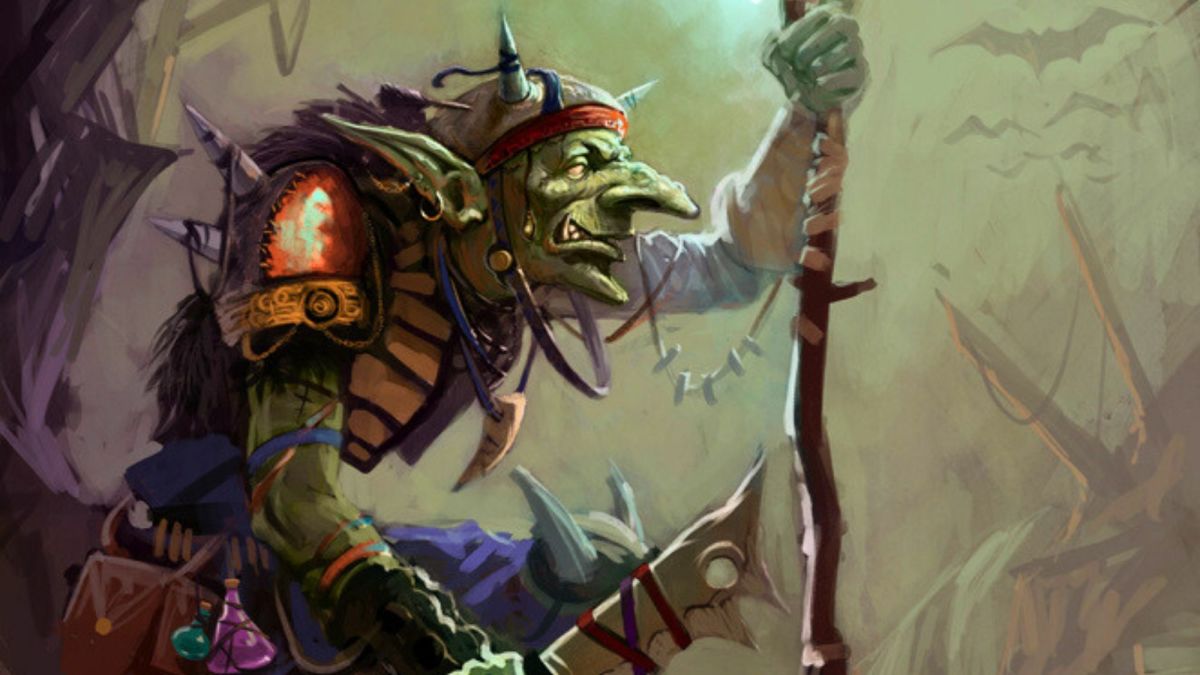
Goblins have long been a fascinating subject in folklore, mythology, and popular culture. These mythical creatures are known for their mischievous and often malevolent nature, making them a captivating topic of interest for many. From ancient legends to modern literature and entertainment, goblins have left an indelible mark on human imagination. In this article, we will delve into 11 intriguing facts about goblins, shedding light on their origins, characteristics, and enduring significance in various cultural narratives. Whether you're a folklore enthusiast, a fantasy fiction fan, or simply curious about these enigmatic beings, this exploration of goblin lore is sure to pique your interest and expand your understanding of these iconic creatures.
Key Takeaways:
- Goblins are mischievous creatures found in folklore around the world, known for their love of treasure and nocturnal activities. They have a complex relationship with humans and are often associated with the element of earth.
- Goblins, often depicted with green skin and pointy ears, have a distinct language and are skilled craftsmen. They have been featured in literature, art, and popular culture, becoming iconic figures in fantasy entertainment.
Goblins are mythical creatures.
Goblins are small, mischievous creatures from folklore and mythology, often depicted as greedy and cunning. They are commonly associated with causing trouble and playing pranks on humans.
Goblins are found in various cultures around the world.
Goblins appear in the folklore of many different cultures, including European, Asian, and Native American. Each culture has its own unique interpretation of goblins, but they are generally characterized as small, grotesque, and often malevolent beings.
Goblins are often portrayed as green-skinned creatures.
In many depictions, goblins are shown with green skin, pointy ears, and sharp teeth. This physical appearance has become a common stereotype associated with goblins in popular culture.
Goblins are known for their love of treasure.
In various legends, goblins are depicted as hoarders of gold and other valuable items. They are often found lurking in dark, underground places, guarding their precious loot from unsuspecting adventurers.
Goblins are skilled craftsmen.
Despite their reputation for mischief, goblins are often portrayed as talented artisans and builders. In some stories, they are known for creating intricate and magical objects, such as enchanted jewelry and powerful weapons.
Goblins are nocturnal creatures.
Many tales describe goblins as creatures of the night, preferring to carry out their misdeeds under the cover of darkness. They are said to be most active during the late hours, when unsuspecting humans are fast asleep.
Goblins have a complex relationship with humans.
Throughout folklore, goblins are depicted as both adversaries and allies to humans. While some stories portray them as malevolent creatures who delight in causing harm, others show goblins forming unlikely friendships with humans.
Goblins have a distinct language.
According to some legends, goblins have their own unique language, which is incomprehensible to humans. This language is said to be filled with guttural sounds and strange, otherworldly tones.
Goblins are often associated with the element of earth.
In many myths and legends, goblins are linked to the earth and natural landscapes. They are believed to dwell in underground caverns, forests, and other remote places where the earth’s energy is strong.
Goblins have been featured in numerous works of literature and art.
From classic fairy tales to modern fantasy novels, goblins have been a recurring presence in literature and art. Their intriguing nature and mischievous behavior continue to inspire writers, artists, and creators across the world.
Goblins play a role in popular culture and entertainment.
From movies and television shows to video games and tabletop role-playing games, goblins have become iconic figures in popular culture. Their unique characteristics and folklore-inspired traits have made them a staple in the realm of fantasy entertainment.
Conclusion
Exploring the world of goblins reveals a rich tapestry of folklore, mythology, and cultural significance. These enigmatic creatures have captured the imagination of people around the world for centuries, and their presence in literature, art, and popular culture continues to fascinate and intrigue. Whether viewed as mischievous tricksters or malevolent beings, goblins remain an enduring and compelling aspect of human storytelling. Their diverse representations across different cultures highlight the universal fascination with the mysterious and the supernatural. As we delve into the lore of goblins, we gain insight into the complexities of human imagination and the enduring power of myth and legend.
And here are the FAQs related to "11 Facts About Goblins":
html
FAQs
What are goblins? Goblins are mythical creatures often depicted as small, grotesque, and mischievous beings in folklore and mythology.
Are goblins and elves the same? While both goblins and elves are mythical creatures, they are distinct entities in folklore and are often portrayed differently in various cultural traditions.
Do goblins appear in different cultures? Yes, goblins are found in the folklore of various cultures, each with their own unique characteristics and attributes.
Are goblins always portrayed as evil? In many stories, goblins are depicted as malevolent or mischievous, but their portrayal can vary widely depending on the cultural context and the specific narrative.
What is the origin of goblin mythology? The origins of goblin mythology can be traced to ancient folklore and legends, with variations and interpretations evolving over time.
Are goblins still relevant in modern culture? Yes, goblins continue to be a popular and enduring element in literature, art, and popular culture, with their presence in various forms of media and entertainment.
Was this page helpful?
Our commitment to delivering trustworthy and engaging content is at the heart of what we do. Each fact on our site is contributed by real users like you, bringing a wealth of diverse insights and information. To ensure the highest standards of accuracy and reliability, our dedicated editors meticulously review each submission. This process guarantees that the facts we share are not only fascinating but also credible. Trust in our commitment to quality and authenticity as you explore and learn with us.
